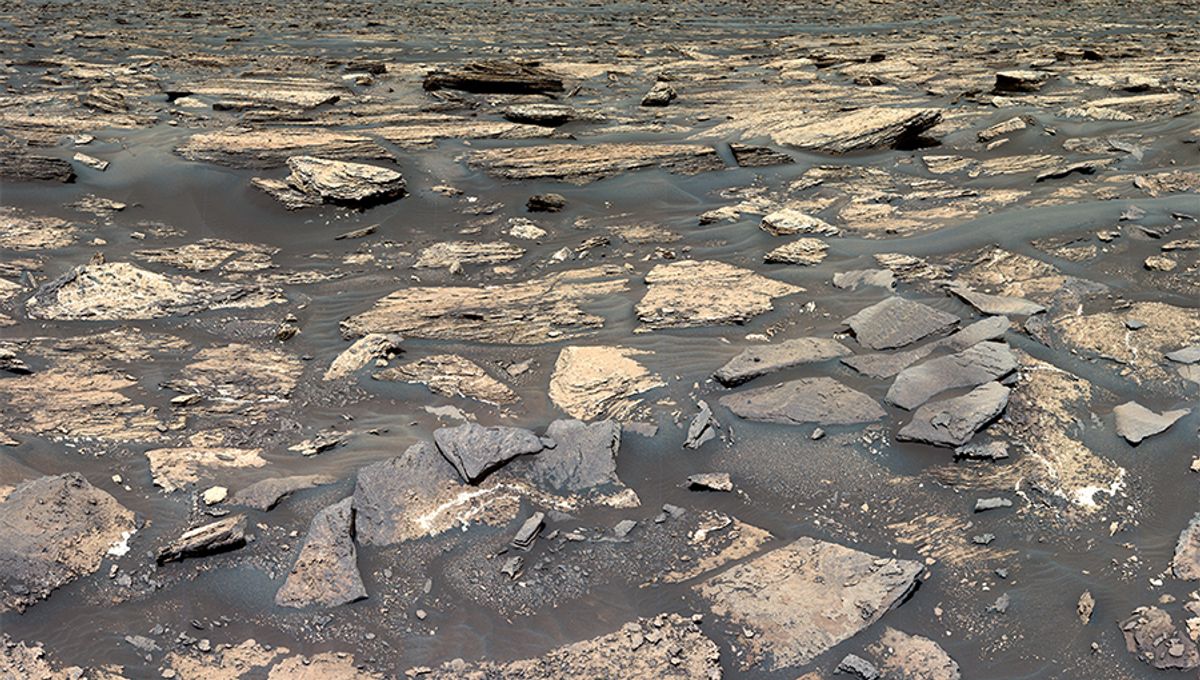
Ancient Mars is believed to have been a wet world. Possibly it was a cold world, with frosts and floods, rather than a tropical paradise. It might have had a denser carbon dioxide atmosphere too, and the composition of that atmosphere is now being called into question. That’s because chemical elements suggest that it could have been more Earth-like than was ever thought possible.
The findings come from NASA’s Curiosity, which is investigating Gale Crater, the site of an ancient lake. Researchers reported a higher-than-expected level of manganese oxide in the sediment rocks. All scenarios investigated by the team require a strong oxidizing environment. Was the primitive atmosphere of Mars richer in oxygen? And if so, how?
“It is difficult for manganese oxide to form on the surface of Mars, so we didn’t expect to find it in such high concentrations in a shoreline deposit,” lead author Patrick Gasda, of Los Alamos National Laboratory’s Space Science and Applications group, said in a statement. “On Earth, these types of deposits happen all the time because of the high oxygen in our atmosphere produced by photosynthetic life, and from microbes that help catalyze those manganese oxidation reactions.”
“On Mars, we don’t have evidence for life, and the mechanism to produce oxygen in Mars’s ancient atmosphere is unclear, so how the manganese oxide was formed and concentrated here is really puzzling. These findings point to larger processes occurring in the Martian atmosphere or surface water and shows that more work needs to be done to understand oxidation on Mars,” Gasda added.
Obviously, we can’t assume it was life that produced the oxygen, and that the oxygen created this chemical compound and then disappeared over eons. But something must have oxidized the manganese and the iron found by Curiosity, so a process must have existed. Even if no life form was involved in it.
The compounds might have simply formed on the lake shore from lake water. It might have formed from groundwater moving through the sands, or it might have been altered by groundwater after it was already in place. But there’s still a need to oxidize those metals. Observations from Curiosity’s ChemCam tell us as much.
“The Gale lake environment, as revealed by these ancient rocks, gives us a window into a habitable environment that looks surprisingly similar to places on Earth today,” said Nina Lanza, principal investigator for the ChemCam instrument. “Manganese minerals are common in the shallow, oxic waters found on lake shores on Earth, and it’s remarkable to find such recognizable features on ancient Mars.”
The study is published in the Journal of Geophysical Research: Planets.
Source Link: New Evidence Ancient Mars Was More Earth-Like Than Thought – And Maybe Even Habitable